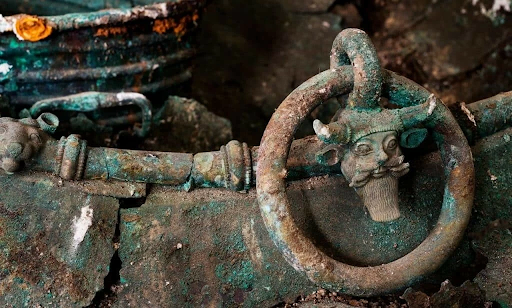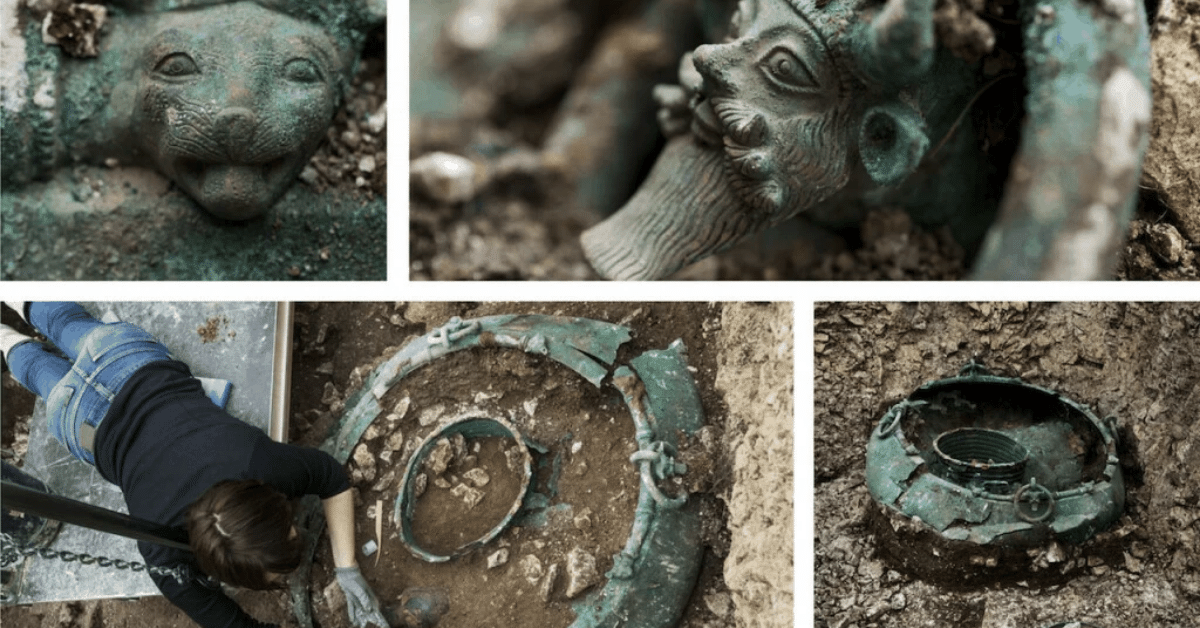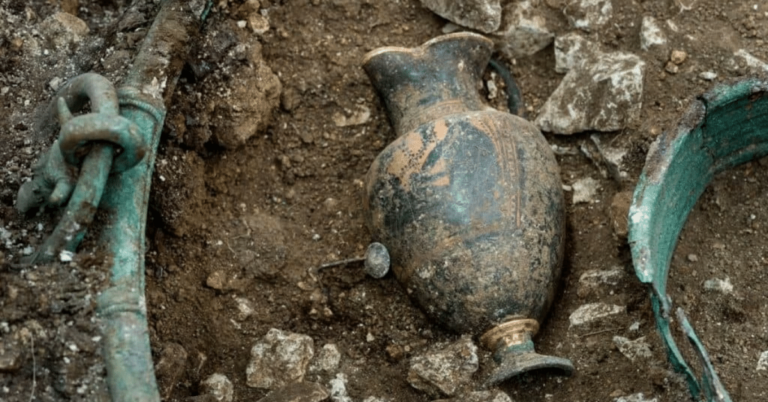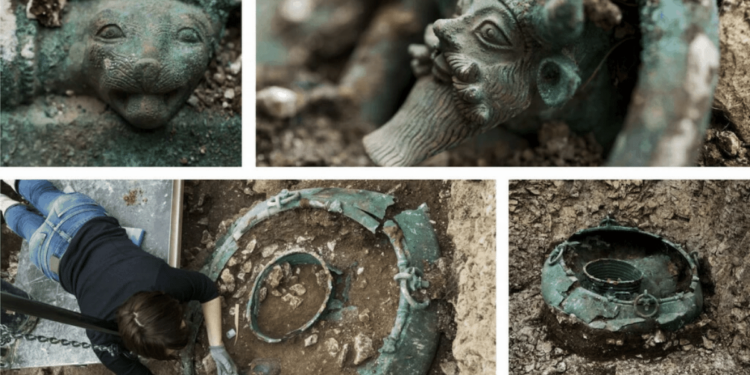Archaeologists uncovered a stunning Celtic tomb on the borders of the small village of Lavau in the Champagne region of France in 2015. It is brimming with Greek and Etruscan treasures and works of art dating back to the 5th century BC. The skeleton at the estate’s core is still adorned with luxury gold and silver jewelry. The “Prince of Lavau,” as the inhabitant was known, was an influential figure, and the investigation of this monumental find could answer critical questions. What did the Celts’ “princes” look like, and what might unusual objects tell us about life in the late Iron Age?

A Royal Interment
The Celtic prince was carefully set on a two-wheeled chariot, probably for afterlife transportation. His head is turned to the south. Around the bones, there were strewn shreds of clothing. Pieces of leather, laces, and closures made of coral, iron, and copper are among them. Experts couldn’t tell if the person was male or female right after being located. They did, however, regard this to be a person of high social standing, perhaps even an aristocrat. Scientists assumed it was a man after discovering a Damascene sword and its sheath close to the body. An X-ray tomography examination of his pelvis indicated that he was indeed male. His true identity, though, remains a mystery.

In the afterlife, there will be a banquet


“An emblematic object of the burial deposit, it [the wine jug] illustrates the intersection of multiple worlds in its assembly and decorative techniques: Greece (Attic pottery), perhaps Etruria (filigree gold ornaments), and the Celtic world (openwork silver adornment)” –INRAP
In a Celtic World, Foreign Goods
The scenic complex’s products all feature exceptional metal and ceramic works with a combination of cultural influences. This demonstrates that globalization was still thriving in 500 BC. The Celts of the Lavau region have played a key role in the economic network that connected them to the Mediterranean, thanks to the presence of a waterway and crossroads in the area. As a result, there was a constant flow of commodities and people. This trade may have resulted in the unusual and valuable treasures discovered alongside Prince Laveau’s remains. For example, some objects could have been gifts to a Celtic ruler or the spoils of Celtic victories in Italy. Paying a tariff to use a route within someone else’s range is frequent for a possible trading partner.
As previously stated, the Celtic Prince of Laveau’s actual identity is unknown. However, he was most likely a ruler who oversaw the region’s economic and political affairs during his lifetime. “He had to be at the pinnacle of the local nobility,” says Bastien Dubuis, the chief archaeologist from INRAP, according to Archaeology Magazine 2015. All of this richness reflects the character buried here’s primary importance.”
The Prince of Lavau Taught Me
The contents of Prince Laveau’s tomb and how he was buried reveal a great deal about the region’s Celtic activities, beliefs, and culture. They are traders engaged in the market and have significant faith in the afterlife. The attention paid to the prince’s burial demonstrates a genuine reverence for the dead. The living person’s job is to guarantee a comfortable and wealthy afterlife. So the prince has everything he needs in the hereafter in his grave: transportation, goods, and, of course, lovely party supplies fit for a grand feast.
Furthermore, residents in the region are open to interacting with people from other cultures. They collaborate and share ideas with them, resulting in high-value and eclectically beautiful things. They waged war and pillaged foreign lands at different times.
In 2019, work on the wealthy grave goods of the Celtic prince will resume. As a result, more information may become available soon. What began as a routine inspection before the construction of a building is now one of France’s most astounding archaeological discoveries since the 1950s, according to INRAP researchers.























